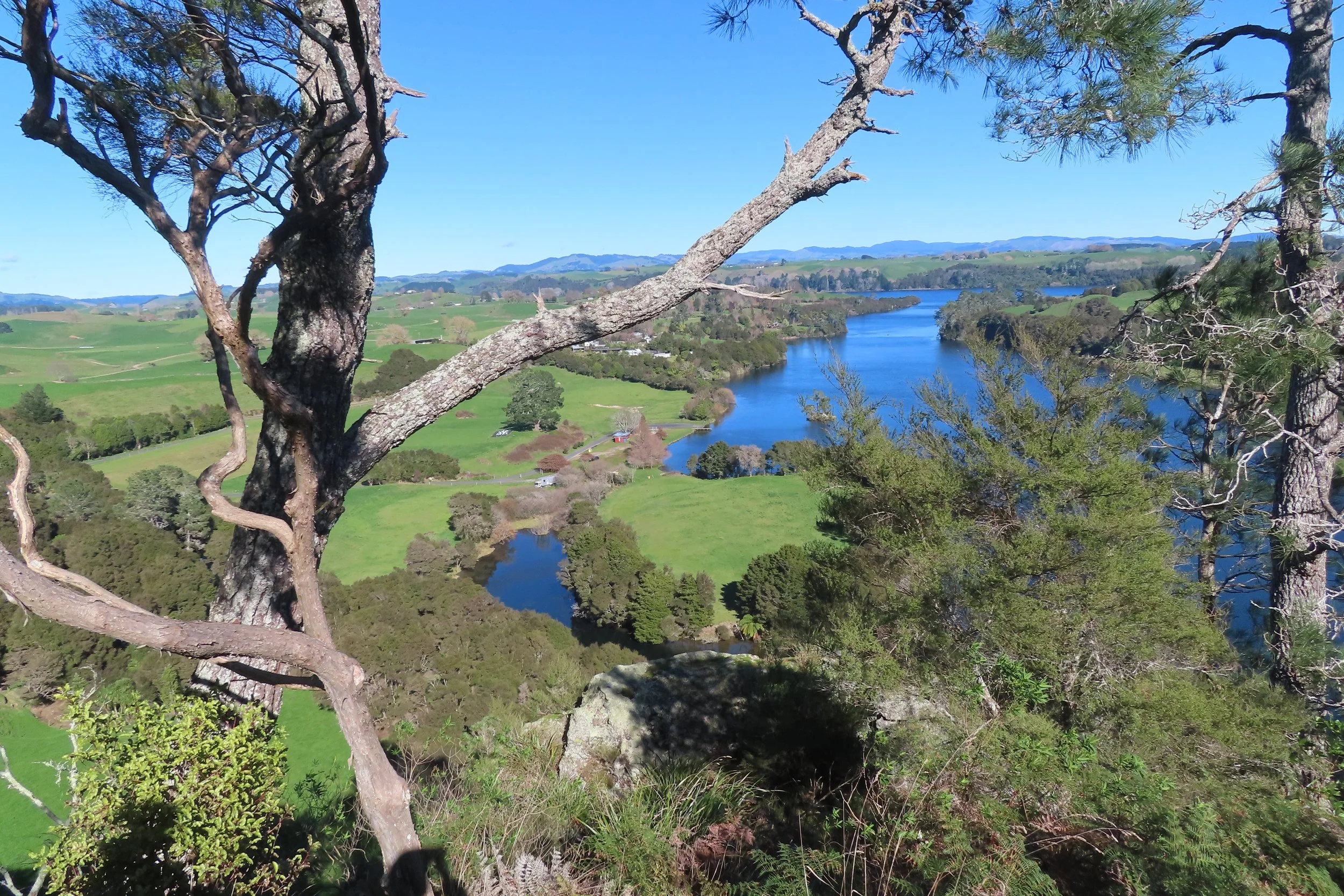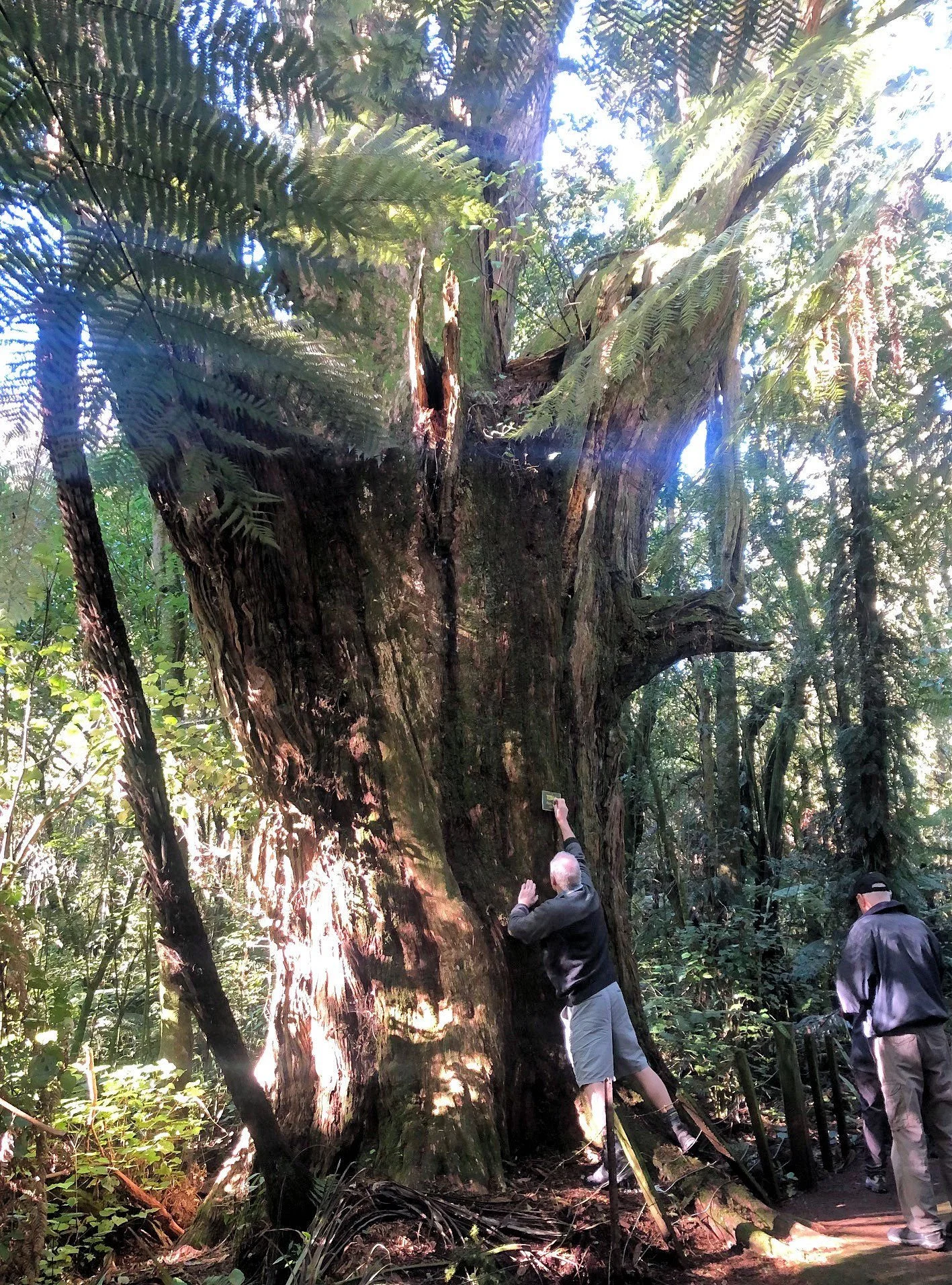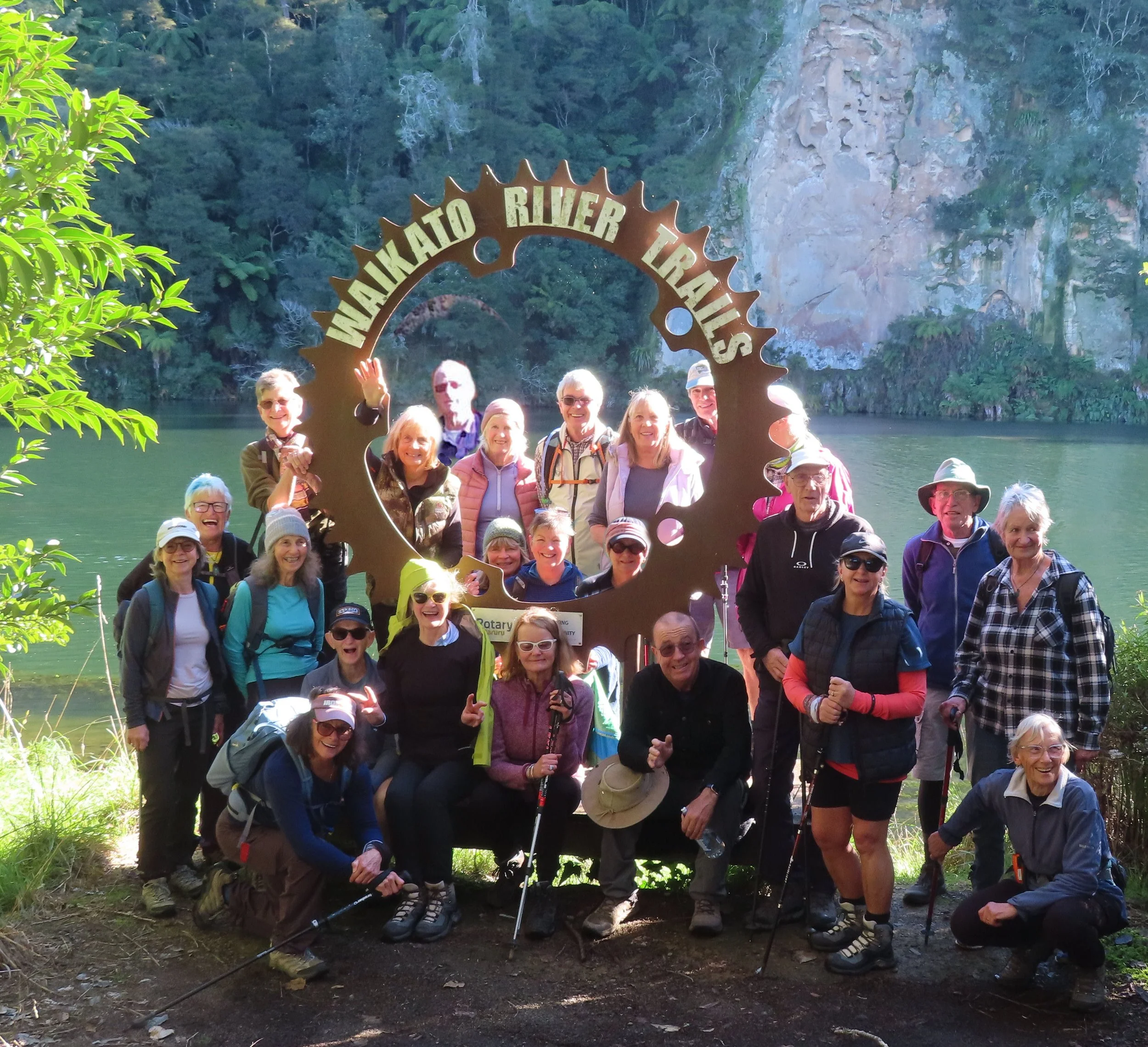The dam that disappeared
Another beautiful Monday, how fortunate we have been with the weather.
We arrived at Jim Barnett’s Reserve with the sun shining on the pristine Te Waotu Memorial Shelter and disturbed a very plump kererū in the process.
Its coppery purple plumage and stark white breast glinted as it swooped to the safety of high branches.
Once the Waotu bush extended 10 kilometres and was 1 kilometre wide.
Māori described the district as ‘the place of tall bush that stands all by itself’, a reference to this isolated pocket of vegetation that was shielded from damaging ash from the Taupo eruption some 1,800 years previously.
Milling of tōtara and rimu in the 16-hectare reserve probably ceased in the 1920’s but occurred in the general area between the 1890’s to 1970’s.
Walter Barnett, a well-known miller, and his sons, including Jim, offered the bush as a reserve which was formally opened in 1991-1992.
Although vested in the South Waikato District the local community, including school groups and even some completing community work sentences have spent years clearing the blackberry, planting tens of thousands of trees, controlling the rat, stoat, possum and feral cats, maintaining and building pathways and displaying informative signage.
We walked the 13 different tracks enjoying each for its different focus.
The Tramway had cuttings carved out by pick and shovel where wooden rails once provided tracks for horses and perhaps bullocks to haul the logs to nearby mills.
Not to be missed was the Tōtara Track where one 1,000 year-old monster with a girth greater than 2.5 metres stands on the Papatangi Land Trust protected by a QE11 Covenant.
It was probably saved from milling because of its less than perfect shape.
All the paths are well groomed and wide but a lattice of tortured roots sprawl across the ground, so it does pay to be wary.
Mangeao is an interesting tree that thrives here. Māori used it in vapour baths and midwifery, and it is reputedly a timber of high strength and pliability.
We heard the tuneful call of the riroriro or grey warbler, and saw many pīwakawaka, but the road runner beep, beep of the kōtare remained unheard on the Kingfisher Track.
Ruru and Barn owl live here but they were probably asleep when we visited.
Next stop was Jones Landing, named after Gordon Jones’s father who had a boatshed there in the 1950’s.
A lone shag preening itself on a jetty submitted to being photographed before making it to safety on a sliver of an island mid river.
Here we joined the Arapuni section of the Waikato River Trail.
The track heads steeply upwards to a side track with wonderful views of the Waikato River and across to Bulmer’s Landing on the opposite bank.
The trail hugs the riverbank, squeezed between farmlands.
Cyclists share this popular route, but we met none on Monday.
There is one busy road crossing near a huge concrete bridge emblazed with 1927.
How hard the manual work in those decades must have been.
Native plantings along with pines provided us with a shady canopy.
We scuffed through a carpet of shed poplar leaves making very satisfying crunching noises.
Tall, deeply etched rocks formed in past volcanic eruptions and in places tinted red and a pinkish orange, formed the opposite bank.
Next, we ventured across a very sturdy swing bridge to the Arapuni power station, another 1920’s structure.
In World War II there was a concern it might be bombed and the whole area was camouflaged with foliage, and generators covered with concrete cones thus becoming known as the ‘dam that disappeared’.
Untouched by warfare it looks strong and austere. There is a short, narrow concrete track leading up the hill which was begging to be explored.
From the top we could see where the river water was diverted through the power station and the concrete banks built to retain the water.
On our way back to Taupō an impromptu impulse to drive up the Tokoroa Lookout had us gazing across the central plateau and the awesome sight of the volcanic mountains glistening with snow.
As we came over the Radio Station Hill a postcard view of silvery mountains and a brilliant blue lake welcomed us home. What a perfect winter’s day.
Next week we are on ungroomed tracks. If you would like more information, please email walkersmondaytaupo@gmail.com or follow us on Facebook at “Taupo Monday Walkers“



